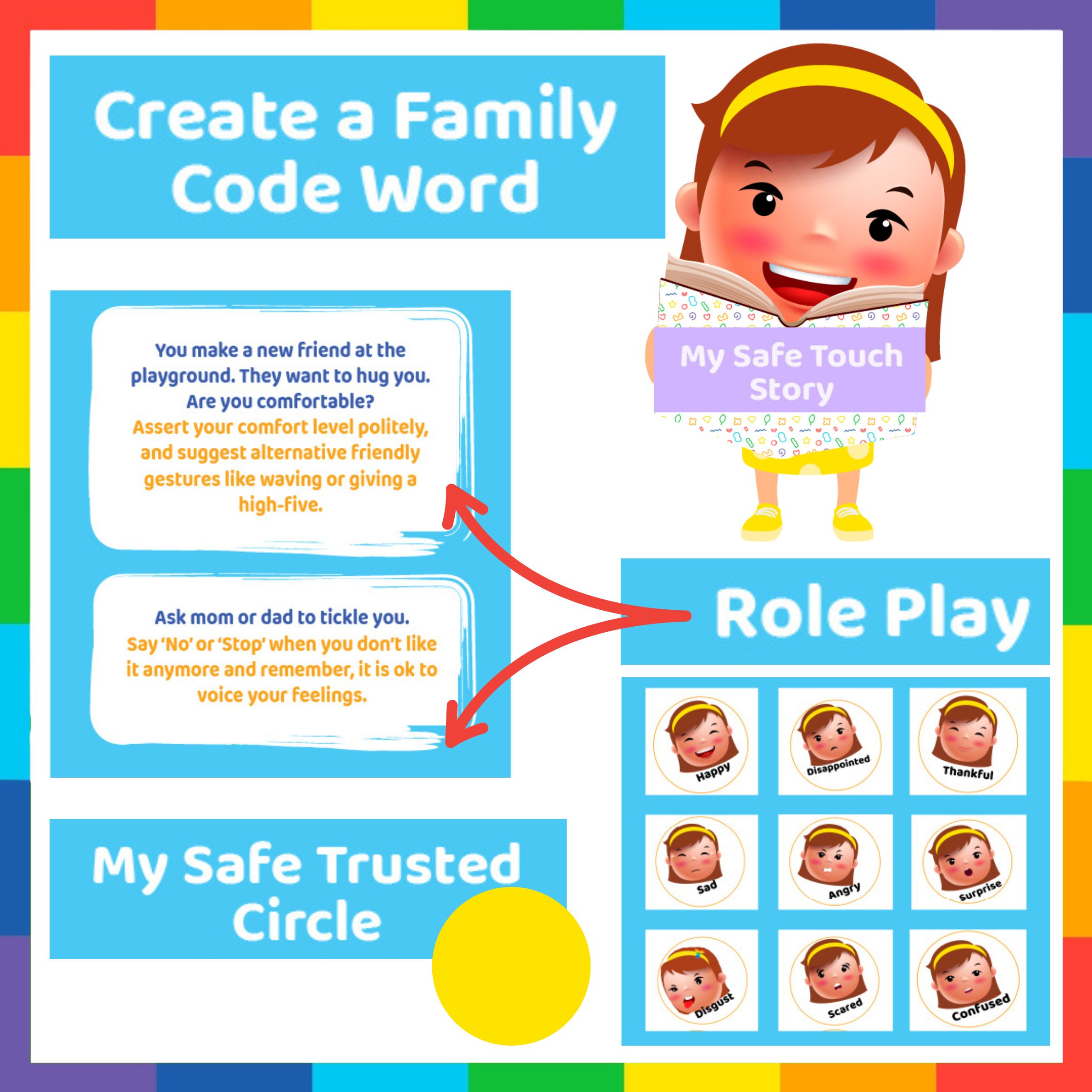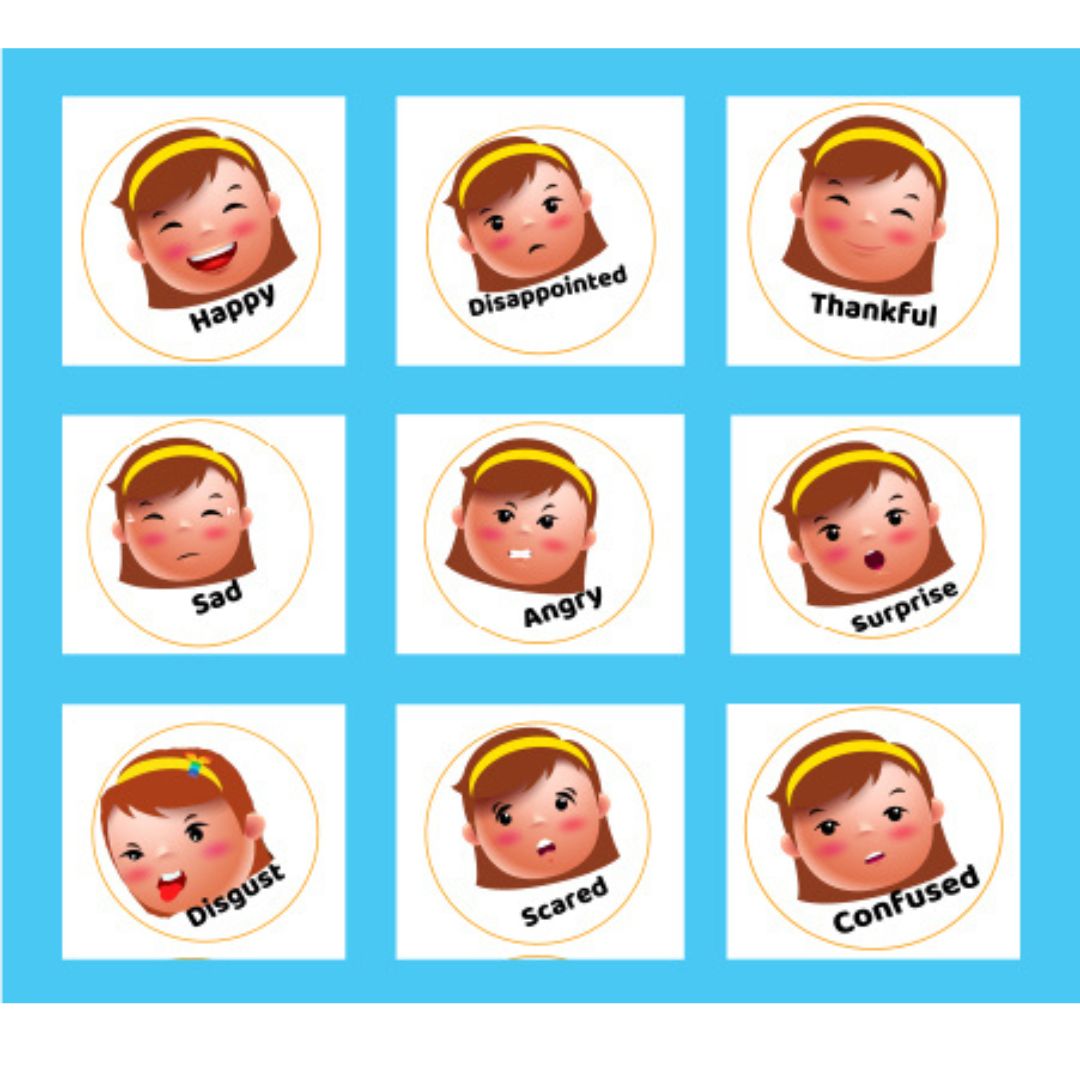
Quick Bites
How to Reinforce Body Safety and Consent?
February 16, 2025
Related
Topics

Hey
-

Resilience-Building – Easy Checklist for Kids of All Ages
August 13, 2025
-

-

How to Ensure Body Safety of Your Kids? – Summary
February 27, 2025
-

Debunk Common Myths About Safe Touch: Know the Truth
February 23, 2025
-

How to Reinforce Body Safety and Consent?
February 16, 2025
Ready for more?
Hey
Sign up for Rainbow Kiddies newsletters for more stories and updates
In this blog we share some engaging activities to help reinforce guidelines on body safety, boundaries, safe and unsafe touches, assertiveness, etc. Add them to your playtime once in a while to help your kids understand such guidelines easily, without feeling scared or anxious about such topics.
Role-Playing Scenarios
- Practice different situations, such as saying “no” to peer pressure or responding to unsafe touches. Watch our video for kids to help them understand more about body safety and related topics. You may also get our comprehensive book on the same topic for kids aged 4 to 9.
- For example: “What would you do if someone asked you to keep a secret about a touch?”, or “What would you say to a new friend you just made who wants to hug or kiss you?”.
Body Parts Puzzle or Drawing
- Use age-appropriate anatomy puzzles or coloring sheets to teach children about body parts and their functions. Meanwhile, we have a fun way for your little one to get started on this. To start off you may use the images given below. This shows our child-friendly unicorn Chloe who shares the messages on body safety and privacy with kids in our latest story and book. As you can see, she has her swimsuit on, to help explain about private parts to kids. You can start with this, or with the images of kids shown alongside.


Boundary Practice Game
- Create a game where children practice saying “stop” or “no” in various playful scenarios. For example, during tag, they can yell “stop” when they don’t want to be touched.
Family Safety Circle
- Work with your child to identify trusted adults they can turn to if they feel unsafe. For this, draw a “circle of trust” together and write names of the people they can trust in it, or ask them to draw their images. Further, they can have this with them as a safety plan for emergencies. Get our story book ‘My Safe Body Bubble‘ to find more such activities for your kids.
Read Book Together
- Read the book ‘My Safe Body Bubble‘ aloud and encourage questions. While you read, remember to discuss key concepts like consent, boundaries, assertiveness, and emotions.
Consent Role-Play with Toys
- Use dolls or action figures to demonstrate respectful behavior, such as asking before hugging or touching.
Storytelling Time
- Create a safe touch story together. For example, “Sam feels uncomfortable when someone hugs him. So, what should he do?”
Feelings Chart
- Use a chart or flashcards with faces and emotions to help children identify and express their feelings about different situations. You may use the below chart for this. This will help them explain their feelings and emotions better. As they grow, you should also introduce them to more depths and variations of these emotions.

Create a Family Code Word
- Develop a “safety word” for emergencies or uncomfortable situations. This helps children signal for help without explaining. When in confusing situations – like a stranger coming to pick them up at school or elsewhere, they can ask for the same safety word to check if this person has actually been delegated by you to pick them up or tend to them.
Puberty Kits
- For older children, prepare a puberty kit with hygiene products and educational material. Also walk them through their purposes. To know more about the intricacies of puberty and how to prepare your kids for all the huge changes, read this article which also links to more useful articles on the same.
Sign Up for your Free Parenting Guide: “10 Everyday Ways to Raise an Emotionally Strong Child”

